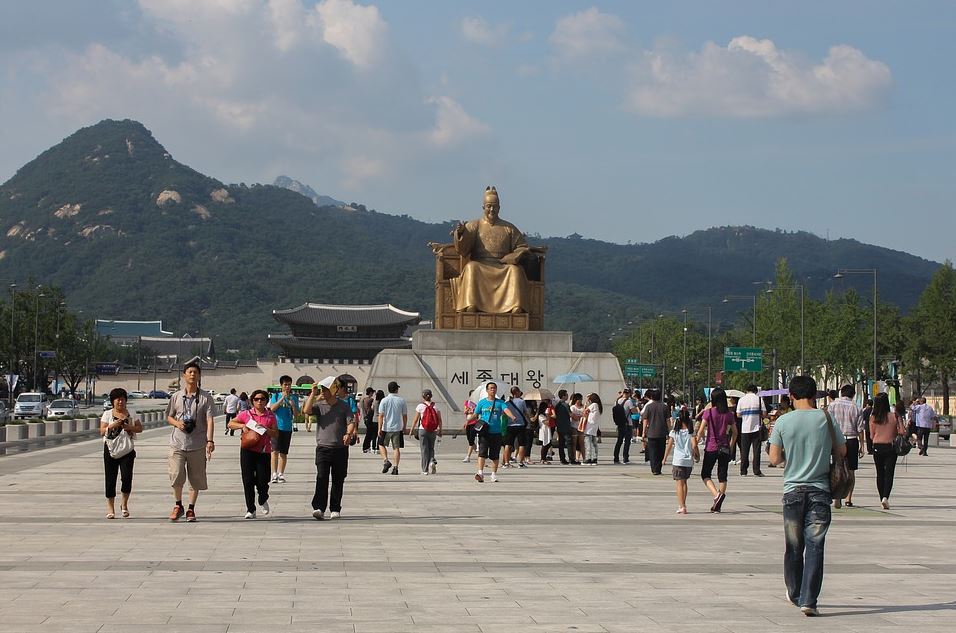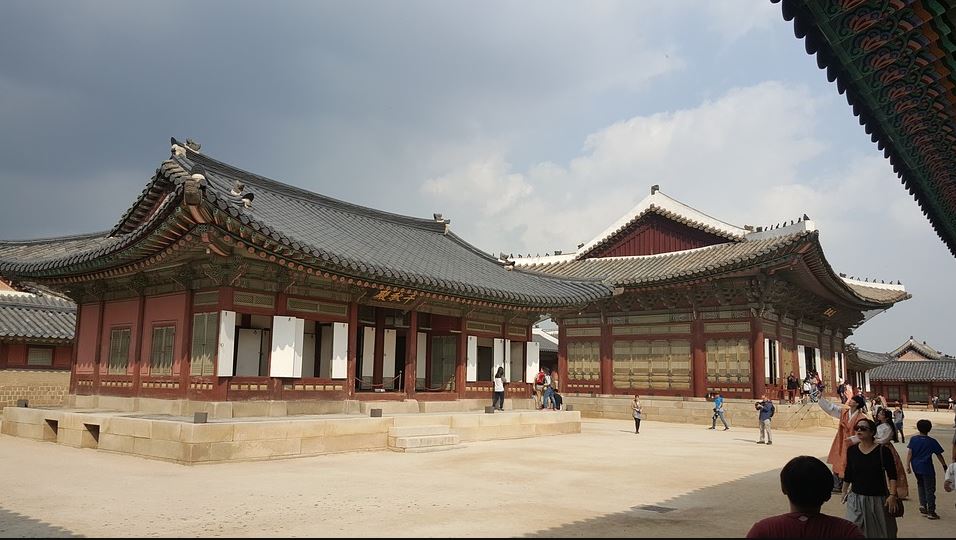Seoul is the capital of South Korea and is home to many historic palaces. Gyeongbokgung Palace is Seoul’s most famous and most visited palace. There are many routes to reach Gyeongbokgung Palace, it depends on you which one you follow. There’s a lot to see and do at Gyeongbokgung Palace, and you can easily miss things as a first-time visitor if you don’t know about it in advance. This guide is intended to help you plan your trip to Gyeongbokgung Palace and will give you all the information to get the most out of your visit. So if you are planning to see this iconic place in Seoul here is a complete route guide to reach Gyeongbokgung Palace:
Best Route Guide to Reach Gyeongbokgung Palace
About Gyeongbokgung Palace

About Gyeongbokgung Palace
Built-in 1395, Gyeongbokgung Palace is also called the Northern Palace because it is the furthest from the north the neighboring Changdeokgung (Eastern Palace) and Gyeonghuigung (Western Palace). Gyeongbokgung Palace is arguably the most beautiful, and the largest of all five palaces in Seoul.
During the Imjin War (1592-1598), the premises were once destroyed by fire. However, all the buildings of the palace were later restored under the leadership of Heungseondaewongun during the reign of King Gojong (1852-1919). It is noteworthy that the most representative structures of the Joseon Dynasty, the Gyeonghoeru Pavilion and the lake around the Hyangwonjeong Pavilion, remained relatively untouched. Geunjeongje’s raised dials and stone markers showcase the representative art style of their age. The National Folk Museum is located on the east side of Hyangwonjeong Pavilion and the Korean National Palace Museum is located south of Heungnyemun Gate.
Address: 161. Sajik-ro, Jongno-gu, Seoul, 03045, Republic of Korea
How to Reach Gyeongbokgung Palace

How to Reach Gyeongbokgung Palace
City Sightseeing Bus
Book a ticket online or take a subway to the Seoul City Tour Bus office. Tickets can be purchased at the office before boarding. An adult ticket costs $ 15, while a child ticket costs $ 10. Hop aboard the large red double-decker bus on the enjoyable Seoul Boulevard. Depart at the Gyeongbokgung Palace stop after taking a bus from Line A.
Read More: Best Theme Parks in Seoul
Subway
Hop onboard line 3 and depart at Gyeongbokgung Station. Wander the corridors of the station until you reach Exit 5. The large entrance of Gyeongbokgung Palace is a 5-minute walk from Gyeongbokgung Railway Station. Alternatively, take Line 5 to Gwanghwamun Station and take Exit 2. From the impressive gates of Gyeongbokgung Palace, Gwanghwamun Station is a 10-minute walk. Check the metro fares and timetable on the high-speed train website.
Bus
Commute by bus which is the least expensive mode of transportation, to reach the impressive historical site of Gyeongbokgung Palace. Hop on board Lines 109, 171, 272, 601, 606, 1020, or 7025. By taking lines 1020, 1711, 7016, 7018, 7022, 7212, 6011, and 9703 commuters will end up at the palace’s west entrance, to reach the south side of the palace grounds.
Taxi
For the most convenient and least congested mode of transportation, call a hotel with a taxi and give directions to your destination. Google Translator could have pre-arranged the titles and names of the landmarks. Using a taxi guarantees a door-to-door service for a local driver who has experience navigating the bustling big city of Seoul.
Visit: Famous Monuments of Seoul
Admission Fees
Adults (ages 19-64): 3,000 won / Groups: 2,400 won
Children (ages 7-18): 1,500 won / Groups: 1,200 won
Opening Hours
November-February 09:00-17:00 (last admission 16:00)
March-May 09:00-18:00 (last admission 17:00)
June-August 09:00-18:30 (last admission 17:30)
September-October 09:00-18:00 (last admission 17:00)
Closed on Tuesdays.
Places to See Near Gyeongbokgung Palace

Places to See Near Gyeongbokgung Palace
Statue of King Sejong
Right in front of the Gwanghwamun Gate is Gwanghwamun Plaza, a public open space with a statue of Admiral Yi Sun-sin and King Joseon the Great Sejong of the Joseon Dynasty. King Sejong is probably the most famous king in Korean history, as the Korean alphabet “Hangul” was invented during his reign to create a script that all Korean people can easily learn.
Bukchon Hanok Village
Between Gyeongbok Palace, Changdeok Palace, and Jongmyo Royal Shrine, Bukchon Hanok Village is a Korean traditional village on top of a hill. The traditional village boasts beautiful traditional alleys and hanos and preserves a 600-year-old urban setting.
Read More: Best Cities in South Korea to Visit
Museums near Gyeongbokgung Palace
Below the central part of Gwanghwamun Plaza are exhibitions on the life and work of two of the most important historical figures in Korean history: King Seong and Admiral Yi Sunsin. Both exhibitions are completely free and provide an interesting insight into the lives of two of South Korea’s most famous historical figures. The exhibitions run from Tuesday to Sunday, from 10:30 to 22:30.
Other museums near Gyeongbokgung Palace that should not be missed:
- The National Folk Museum of Korea
- National Museum of Modern and Contemporary Art – Seoul
- Kumho Museum of Art
- National Museum of Korean Contemporary History
- Daelim Museum
Hope you received a brief and easy idea about the various routes to reach Gyeongbokgung Palace in Seoul and the added duration and cost information that might have helped you, to manage your schedules and budget according to your trips. There are more engaging and helpful blogs that can help you out with a lot of on-ground basic problems so visit our website or download our Adequate Travel app to win exciting offers over various trips and tour packages that will make your journey more efficient and pocket friendly.
The post Complete Route Guide to Reach Gyeongbokgung Palace appeared first on World Tour & Travel Guide, Get Travel Tips, Information, Discover Travel Destination | Adequate Travel.